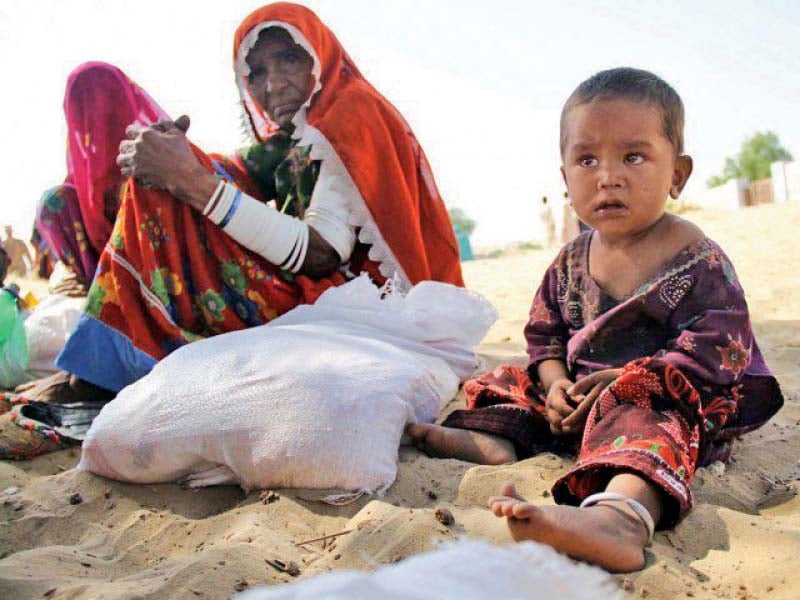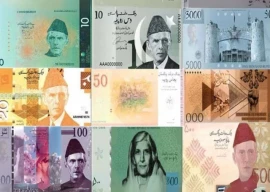
Pakistan has achieved a remarkable decline in poverty over the past 15 years from a high of 50.4% in 2005-06 to 21.5% – calculated using evidence from the 2018-19 Household Integrated Economic Survey (HIES).
This is driven by both urban and rural decline in the incidence of poverty.
The Gender Development Index (GDI) of Pakistan stands at 0.745, which shows an improvement over 0.615 in 2000. GDI is a measure of gender gap, showing the female Human Development Index (HDI) as a percentage of the male HDI.
HDI is based on three basic dimensions of human development – health, knowledge and living standards.
Pakistan ranks 154 on the GDI, which is much below the ranking of its regional counterparts, ie India (131), Bangladesh (133), Sri Lanka (72) and Indonesia (107).
The multidimensional poverty (MPI) headcount ratio stood at 24.4% (2013, Pakistan Social and Living Standards Measurement Survey – PSLM) and according to the PSLM 2018, it is 21.2%.
MPI is a measure of poverty that captures deprivations in education and access to basic infrastructure in addition to income or consumption at the $1.90 international poverty line.
Rural Balochistan has the highest poverty headcount as compared to its counterparts. Multidimensional poor means not just having lack of income but also deprivation in terms of children’s education, women’s health and family health.
Women suffer not only in the area of education but also in terms of labour force participation, political participation, access to assets and resources.
The main barrier to gender equality is the societal perception of women as lower status dependents, reinforced both by customary practices and the laws.
Women lack information about opportunities, assets and services; do not own or control resources; are restricted in mobility; are equipped with non-marketable skills and have no voice. Different forms of violence and fear of violence are additional realities that constrain women.
Although access to finance has been widely supported to help women climb out of poverty, their lack of mobility due to cultural norms coupled with the lack of ability to gain acceptance from the potential male employees in a male-dominated society severely hampers their choices of potential entrepreneurial ventures born out of government/ NGO support.
Poverty determinants
Since long it has been an established fact that education is the supreme factor for poverty reduction. Education enhances the earning potential of individuals and subsequently the increased earnings help diminish poverty.
Education opens mind to enhance decision-making abilities and awareness regarding opportunities of social mobility.
According to the PSLM 2018-19 data, 16.65% of the children below 20 years left school in order to help at home or look for work outside.
Some 487 males against 161 females said they had to work outside home whereas 590 females against 291 males said they had to help at home.
While girls are expected to do home chores, boys are expected to go outside and work. This reason for the out-of-school children means that due to cash constraints, parents had to resort to halting the education of their children.
With UNDP figures putting women literacy rate at 46.5% and out-of-school female children (in primary and lower secondary education) at 33.6%, the government needs to immediately formulate female education policies.
Although the UNDP figure of 1.6% for employed women population below the international poverty line may be misleading, it still gives an estimate of the low poor female labour force participation.
I mention it being misleading because a huge proportion of these women are employed in the informal economy and it is hard to document their contribution to the labour force.
Women’s presence in the informal sector is higher and they are unable to secure higher wages. The lower levels of remuneration do little to empower women and this kind of work is often the cause of additional burden and oppression for the females.
Women’s work is menial, and time and energy consuming, thus contributing to female-associated poverty levels. Eliminating inequality in the labour market is more urgent than ever, including addressing the occupational segregation.
Enhancing the decision-making power of women is the focus of the current Kafaalat programme of the government. However, the deep-rooted social barriers to Pakistani women give them little say in decision-making at the household and community levels.
They also have no say in personal issues like marriage and divorce. Acceptance of a more public and active role for them that opens the pathway of empowerment needs additional focus of the government.
As a society we need to step up efforts to target these determinants of multidimensional poverty so that we are able to come close, if not achieve, Sustainable Development Goal (SDG) 1 ‘No Poverty’ and SDG 5 ‘Gender Equality’ by 2030.
Information gaps to protect women’s health and wellbeing need to be addressed. Lack of latest data access, broken down by sex, age and other characteristics, hinders quicker policy action.
The various bodies should aim to improve gender data collection and expand research on the gender aspect of poverty.
In her famous words, English novelist Mary Shelley said, “I do not wish women to have power over men, but over themselves.”
The writer is a PhD scholar at the Institute of Business Administration, Karachi
Published in The Express Tribune, September 20th, 2021.
Like Business on Facebook, follow @TribuneBiz on Twitter to stay informed and join in the conversation.












1736070587-0/Express-Tribune-(2)1736070587-0-270x192.webp)
1737452260-0/Gaddafi-stadium-(2)1737452260-0-270x192.webp)
1737531830-0/Saim-Ayub-injury-(2)1737531830-0-270x192.webp)









COMMENTS
Comments are moderated and generally will be posted if they are on-topic and not abusive.
For more information, please see our Comments FAQ